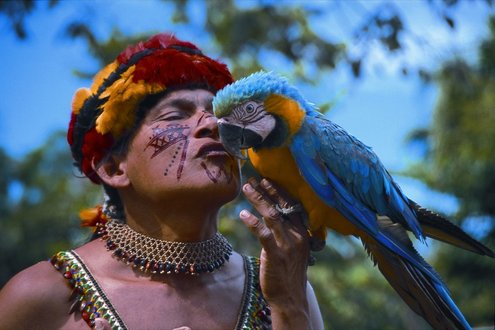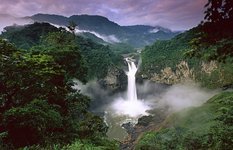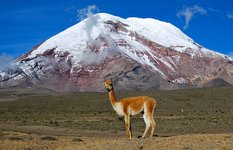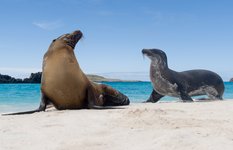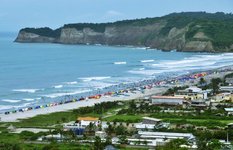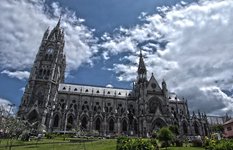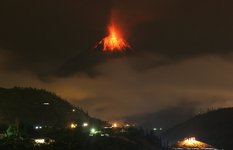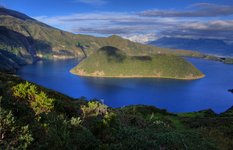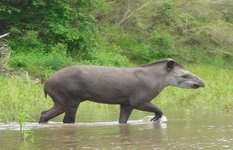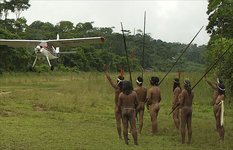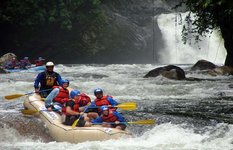 Been there
Been there
 Want to go
Want to go
 Ask friends for recommendations
Ask friends for recommendations
Things to do
Attractions and sights
 View Map
View Map
-
Quito, the capital of Ecuador, sits in a spectacular highland setting, surrounded by volcanoes, and the cobbled streets of its lively historic center are packed with colonial churches, plazas, museums and historic mansions. Quito has a varied dining scene; the Mariscal offers the most choices but the historic center has the most traditional restaurants.

-
Cotopaxi National Park, just 50 km south of Quito, is centered around active Cotopaxi volcano, reaching a height of 5,900 m / 19,350 ft. Since 1738, Cotopaxi has erupted more than 50 times, resulting in the creation of numerous valleys formed by lahars (mudflows) around the volcano. Climbing Cotopaxi to the summit is quite popular with up to 100 climbers attempting it on weekends. Today, mountain guide companies offer regular guided climbs of the mountain

-
This highland city in southern Ecuador has been made a UNESCO site, thanks to the wealth of historic buildings, churches and a remarkable cathedral that line its Old-World cobbled streets. Cuenca also has a lively nightlife, some excellent restaurants and a rich cultural life that includes a number of art galleries and museums.

-
Quilotoa is a volcano in Ecuador's central highlands; it's possible to trek to the summit and also around the crater lake. The indigenous villages around the volcano are known as the Quilotoa loop; they attract adventurous travelers who hike and bike between the villages and volunteer in sustainable agriculture programs.

-
Yasuni National Park is a vast tract of unspoiled, protected rainforest in eastern Ecuador, with a biodiversity practically unmatched anywhere else on earth. Besides a cornucopia of wildlife, it's also home to indigenous tribes that continue to resist contact with the outside world. The park can be explored by canoe or on foot with experienced guides.

-
In a valley between the Andes and the Amazon, the town of Baños is known for its water-related attractions and is particularly popular with backpackers. Besides the waterfalls and numerous hot springs, there's also white-water rafting. For those who prefer to remain on land, there are plenty of hiking trails and mountain biking opportunities.

-
Reachable from the fishing town of Puerto Lopez, Isla de la Plata is rich in bird life. The waters around the island attract almost a thousand humpback whales between June and September. During whale-watching boat trips you may also spot dolphins, killer, beaked and pilot whales.

-
Ecuador holds many colorful annual festivals. Ones not to miss include the Dia de los Muertos, celebrated in cemeteries, Fiestas de Quito, which include bullfighting, traditional dancing and music, Cuenca's Independence Day which includes parades and fireworks, and New Year's eve, with effigies representing bad vibes from the past year burned at midnight.

More attractions
 Hide Map
Hide Map
When to go
| |||||||||||||||||||||||||||||||||||||||||||||||||||||||||||
Best time to go:
The most pleasant time is between June and September; October and November bring rain and cooler temperatures to the highlands and December-May is the rainy season in the Oriente.
Warning:
It is advisable to receive a typhoid vaccination, and possibly a yellow fever vaccination, depending on your specific area of travel. Outside the major cities and tourist areas, malaria can be a problem.
Ecuador offers great opportunities for hiking and climbing, unfortunately, some travelers have been attacked and robbed in remote sections of well known climbs. Travelers are urged to go in a large group for safety reasons.
How to get there
By plane, to Quito Int'l Airport
Reviews


